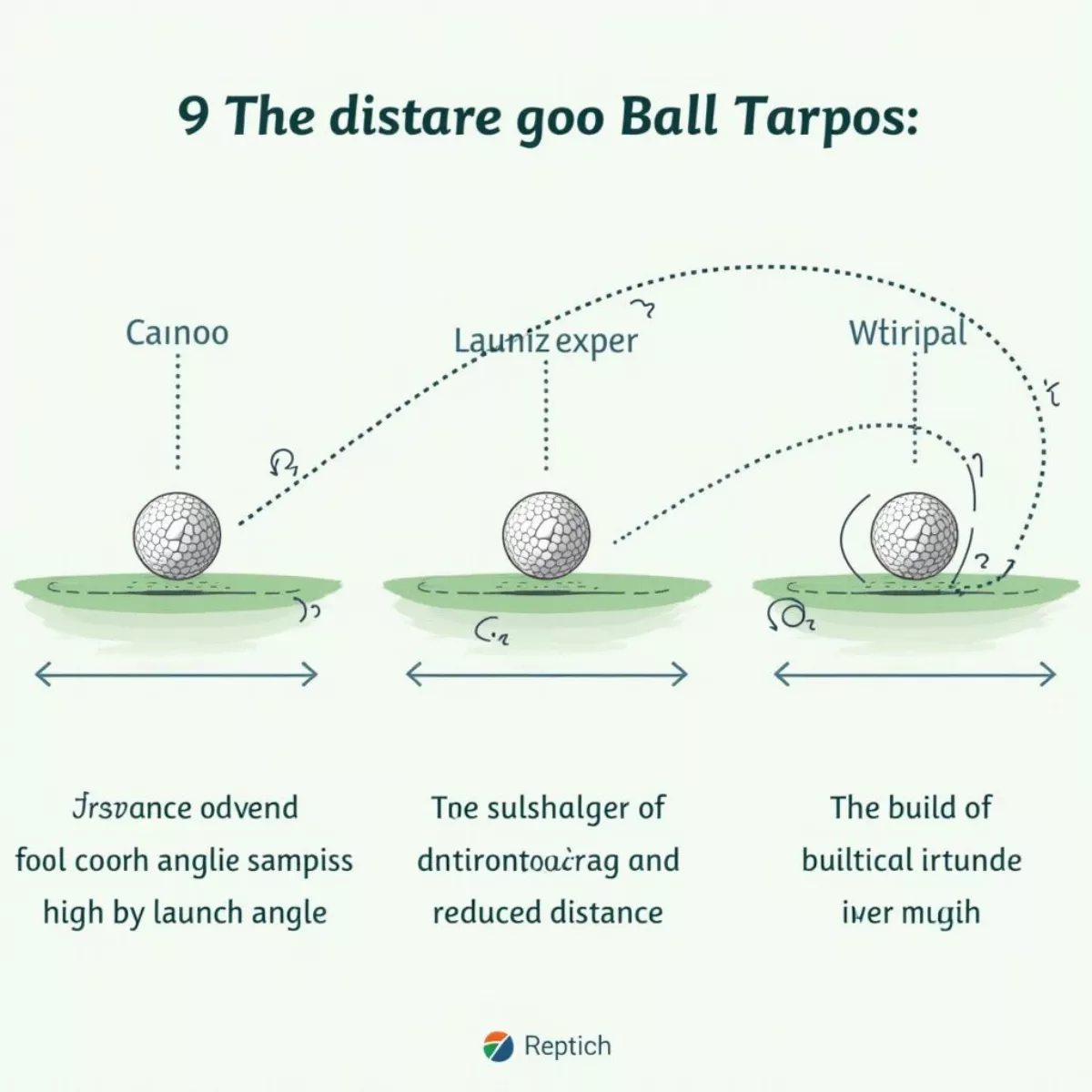When it comes to golf, every stroke counts. One of the most crucial factors that can significantly impact your performance is your launch angle. But what exactly is launch angle, and why is it important? In this comprehensive guide, we’ll break down everything you need to know about launch angle, its impact on your game, and how to optimize it for better performance on the course.
What is Launch Angle?
Launch angle refers to the vertical angle at which a golf ball leaves the clubface immediately after impact. It is measured in degrees and can greatly influence the distance, trajectory, and overall control of your shots.
Understanding this concept is crucial because it impacts both distance and accuracy. Whether you’re hitting a drive off the tee or playing an iron shot, your launch angle can determine how high the ball rises and how far it travels.
Why is Launch Angle Important?
Different launch angles result in varying trajectories. Here are several reasons why you should care about your launch angle:
- Distance Optimization: The right launch angle helps you maximize distance. For instance, a lower launch angle with higher spin might not carry the ball as far, while a higher launch angle combined with lower spin can lead to greater distance.
- Trajectory Control: A consistent launch angle allows you to predict how the ball will react, aiding in shot planning. Knowing whether the ball will stay low or climb high can help you navigate obstacles and assess wind conditions.
- Consistency: A proper understanding and control of your launch angle during practice can lead to greater consistency in your shots. This is essential for lowering your score and improving your overall performance.
The Science Behind Launch Angle
Launch Angle and Distance
To visualize how launch angle impacts distance, consider the optimal launch angle for a driver, which is often between 12 to 15 degrees:
| Launch Angle (Degrees) | Effect on Distance |
|---|---|
| 8 – 10 | Low trajectory, less distance |
| 10 – 12 | Ideal for achieving distance |
| 12 – 15 | Optimal for maximizing distance |
| 15 – 18 | Higher trajectory, may loss distance |
| 18+ | Very high trajectory, increased drag |
 Golf Ball Launch Angle and Trajectory
Golf Ball Launch Angle and Trajectory
Spin Rate
Spin rate, combined with launch angle, plays an essential role in how far your ball travels. A high launch angle with a low spin rate can lead to more carry and less drag, which often results in longer distances. Conversely, a low launch angle with high spin can curtail distance.
Factors Influencing Launch Angle
Several elements can affect your launch angle, including:
- Club Selection: Different clubs have different designs, affecting the trajectory. For example, a driver tends to promote higher launch angles.
- Swing Path: The direction of your swing can influence your launch angle. An outside-in swing path may produce a different launch angle compared to an inside-out swing.
- Ball Position: Where you position the ball in your stance can impact the launch angle; placing it forward can lead to a higher launch.
- Tee Height: Especially for drivers, how high or low you tee the ball can also significantly affect your launch angle.
How to Optimize Launch Angle
Improving your launch angle involves a mix of technique, equipment, and practice. Here are tips to optimize that launch angle for better performance:
- Experiment with Tee Height: Adjusting your tee height can lead to different launch angles. A higher tee may help achieve a higher launch angle with your driver.
- Adjust Your Stance: Make sure you are balancing your weight. A balanced stance can help produce a more consistent swing path, leading to reliable launch angles.
- Monitor Your Swing Speed: The faster you swing, the more potential you have to increase launch angle. However, remember that control is just as important as raw power.
- Use Technology: Golf simulators and launch monitors provide precise metrics about your launch angle and other vital statistics. Many golfers find this beneficial for real-time feedback during practice.
- Choose the Right Equipment: Some drivers and irons are designed to promote higher launch angles. Look for clubs with adjustable settings to fine-tune your launch characteristics.
 Golfer Analyzing Launch Angle Data on Launch Monitor
Golfer Analyzing Launch Angle Data on Launch Monitor
Common Launch Angle Myths
There are plenty of misconceptions about launch angle in golf. Here are a few to set the record straight:
- Myth 1: Higher Launch Always Means More Distance
- Fact: While a higher launch can lead to greater carry, too much elevation can increase drag and reduce total distance.
- Myth 2: Launch Angle Is Only About the Driver
- Fact: Every shot, not just drives, has an optimal launch angle. Irons also benefit from the right launch characteristics.
- Myth 3: Changing Swing Mechanics Is the Only Way to Change Launch Angle
- Fact: It’s often simpler than that. Tweaking your stance, grip, and equipment can notably adjust your launch angle without overhauling your swing mechanics.
Key Takeaways
- Launch angle is a crucial factor in determining how far and high your shots will travel.
- The optimal launch angle for drivers is typically between 12 to 15 degrees for maximum distance.
- Many factors, including club selection, swing path, and tee height, can influence your launch angle.
- Using a launch monitor can help you gain valuable insights into improving your launch angles.
- Consistency in launch angle can lead to better performance on the course.
FAQ About Launch Angle
1. What Launch Angle Should I Aim For with My Driver?
- Ideally, you should aim for a launch angle of 12 to 15 degrees, which typically balances distance and trajectory.
2. Can I Change My Launch Angle without Changing My Swing?
- Yes, adjustments in your tee height, stance, and equipment can help modify your launch angle without a complete swing overhaul.
3. How Does Launch Angle Affect My Spin Rate?
- A higher launch angle with a low spin rate usually results in maximum distance, while a lower launch angle with high spin may negatively impact distance.
4. Is Launch Angle More Important than Swing Speed?
- Both are important, but an effective launch angle can help optimize distance even with lower swing speeds.
5. Can I Measure My Launch Angle?
- Yes, using a launch monitor at a driving range or during a personal session can give you precise readings on your launch angle.
6. Does Wind Impact Launch Angle?
- Yes, wind conditions can affect the effectiveness of your launch angle. It’s essential to adjust your strategy depending on the weather.
7. Can I Change My Launch Angle with Different Golf Balls?
- Yes, the type and design of the ball can impact spin rates and launch angles, so experimenting with different balls may produce varied results.
8. How Do I Know if My Launch Angle is Optimal?
- If you are consistently maximizing distance and accuracy, your launch angle is likely optimized. Using launch monitors can provide data comparisons.
9. Should I Focus on Launch Angle or Other Metrics?
- It’s best to look at a combination of metrics, including launch angle, spin rate, and swing speed, for comprehensive performance improvement.
10. Can I Adjust My Clubs for Launch Angle?
- Many modern drivers come with adjustable settings that allow you to customize the loft, which can help alter your launch angle.
By understanding and controlling your launch angle, you can take your golf game to new heights—literally and figuratively! Next time you’re on the course, remember that fine-tuning your launch angle might just be the key to lowering your score. Happy golfing!

